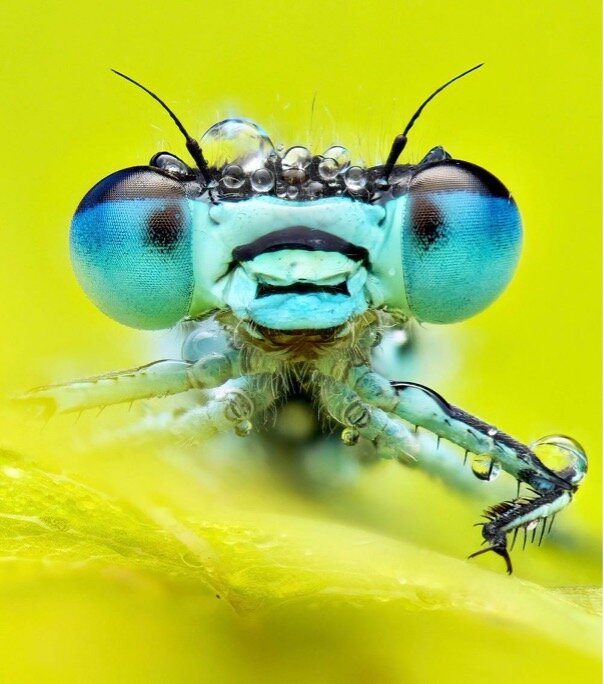At PlantingSeeds we are all passionate about what we do. We know the threats to our environment, to our native plant, insect and animal species and we know that there are immediate practical actions we can take to mitigate the harms and build a diverse and secure future.
But there’s a further challenge: how do we get this information out to the broadest possible extent? How do we alert our communities without alarming them to a point of inaction and despair? How do we let them know that solutions are possible, and give them the tools to help implement those solutions?
That challenge is made harder by the diverse and crowded media landscape we all now inhabit. But Dr Judy Friedlander, our PlantingSeeds founder, has made a strong start.
In a paper co-written with Dr Tania Leimbach and published in the Australian Journalism Review, she argues that the hybrid media landscape of traditional platforms like newspapers and television mixed with digital, interactive and social media offers challenges but also the possibility of new and effective environmental communication.
The paper argues that there are distinct strategies that help to cut through current eco-anxiety and disconnection about environmental issues as well as the ‘infoglut’ that features often overwhelming and competing information.
The influence of the traditional platforms is now complemented – and sometimes complicated – by online sites, podcasts and the many social media platforms, allowing information to flow in many directions and at great speed.
At the same time, ‘traditional’ media values like reliability and nuance are not always present in the newer media and the speed at which information spreads can lead to oversimplification and the loss of careful analysis.
The paper found, in a study of how PlantingSeeds’ B&B Highway has been reported, that – perhaps surprisingly – news media such as legacy news ‘papers’ leads the charge in setting the agenda. That is – giving an issue priority and setting key frames or messages.
Social media interactivity then ‘enables dialogue, community building and real-time responses to environmental crises’.
Campaigns like #StopAdani galvanized global movements and stirred young activists and visual media like videos and infographics make issues visible and tangible.
But the risks include misinformation, viral hoaxes, oversimplified narratives and the drive to prioritise ‘engagement’ over accuracy leading to sensationalism rather than nuanced analysis.
Such an environment offers new and tricky challenges for effective communications, but the authors use the example of the B&B Highway as a possible model for finding a path to such communication.
Over a three-year research process from 2019 to 2022, they used what they call the MAVEN framework to look at media coverage, community uptake and biodiversity outcomes through communications in the hybrid media landscape.
As explained in their paper, the B&B Highway was developed by PlantingSeeds as a practical and educational project, involving schools, educators, the Department of Education and the public. It aims to regenerate the urban environment, focusing on pollinators and pollinating plants, to make cities biodiversity hotspots through a series of wildlife corridors.
The MAVEN framework consists of Meta-frames of overarching concepts; Actions and Applications which allow for scaling as well as to local needs; Values relating to ‘Common Cause’ issues and news values; Evidence and Ethos, with messaging from reputable stakeholders and N for News media that still often leads the charge to disseminate key messages.
The meta-frame in this research was the B&B Highways, or ‘Bed and Breakfast for Birds, Bees, Biodiversity’ with calls for action and evidence of positive outcomes an integral part of the messaging.
Information included support for the B&B Highway from public and academic institutions such as the NSW Department of Education and the University of Technology Sydney – underlining the project’s authority and scientific rigour.
Coverage of the project was generated in The Sydney Morning Herald, on the ABC News website, in The Conversation and the Daily Telegraph as well as on the ABC’s Gardening Australia program and several social media channels.
The authors conclude that ‘the twin challenges of weighty environmental issues and a hybrid media “infoglut” require environmental communications to implement strategies that cut through these complexities to offer practical and scalable solutions.’
For all its challenges, though, the hybrid media landscape offers positives as well. Major reports, such as those from the Intergovernmental Panel on Climate Change, are covered in mainstream media then spread, debated and illustrated through social media platforms, blogs, YouTube channels and other feeds.
Documentaries on plastic pollution have helped spur grassroots campaigns such as #PlasticFreeJuly, the introduction of bans on single-use plastics and campaigns for local beach clean-ups.
And while biodiversity crises such as species extinction or habitat destruction can be under-reported in mainstream news, digital media can be argued to help through platforms such as iNaturalist that encourage citizen science enthusiasts to share discoveries and data.
In this complex world facing the urgency of environmental degradation, media literacy is more important than ever and the authors call for efforts to improve that literacy, for fact checking and the input of scientific organisations as part of the future.
They urge environmental advocates to harness the credibility of the traditional media alongside the reach and engagement of digital platforms.
They stress the importance of storytelling and visual communication, building both emotional and intellectual responses and the importance of dialogue and discussion while ensuring they reach diverse communities – ‘particularly those most affected by environmental harm’.
As they conclude, ‘navigating this complex landscape requires not just technological savvy, but a renewed commitment to truth, transparency, and the common good.
‘Only through informed, engaged and empowered publics can we hope to meet the defining environmental challenges of our time.’
Article by Geraldine O'Brien

